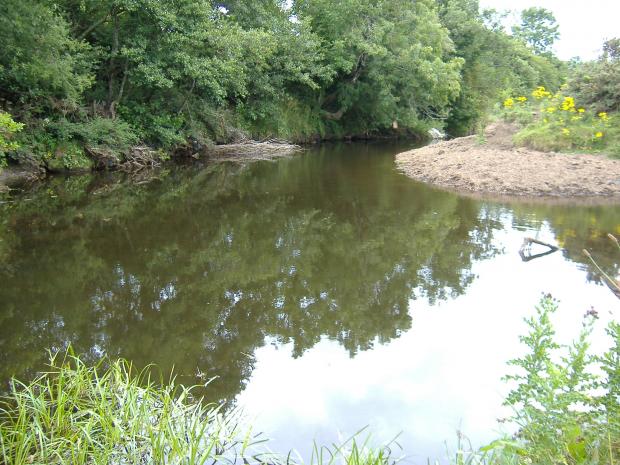
The Cladagh (Swanlinbar) River rises high on Cuilcagh Mountain, flowing steeply downslope before widening as it enters Upper Lough Erne.The upper half is typical of fast-flowing rivers that are oligo-mesotrophic. It supports a number of aquatic plants, consisting mainly of mosses such as Fontinalis antipyretica and liverworts such as Marchantia polymorpha. The main vascular plant in these upper reaches is the stream water-crowfoot, which occurs where the river is more smooth-flowing. Trees line the lower half of the river where it is slow-flowing, deep and eutrophic and the plants are typical of waters rich in nutrients. Vascular plants are dominant and include stands of broad-leaved pondweed and yellow water-lily.
The upper Cladagh (Swanlinbar) River is of particular importance for the freshwater pearl mussel. It is one of the few rivers in Northern Ireland that still retains a significant and viable population of this rare shellfish. In addition, the Atlantic stream crayfish is also found. Otters and kingfishers are also present along the length of the river.
Related articles
- ASSI Guidance for Public Bodies/Competent Authorities
- Coastal Areas of Special Scientific Interest
- Conservation Management Plans (CMPs)
- European Marine Sites - Marine Special Areas of Conservation and Special Protection Areas
- Introduction to Conservation Management Plans (CMPs) for Northern Ireland’s Special Areas of Conservation
- Marine Conservation Zones
- Marine Protected Areas
- Marine Ramsar sites
- Portrush Coastal Zone
- Special Areas of Conservation
- Special Areas of Conservation for Harbour porpoise
- Special Protection Areas
